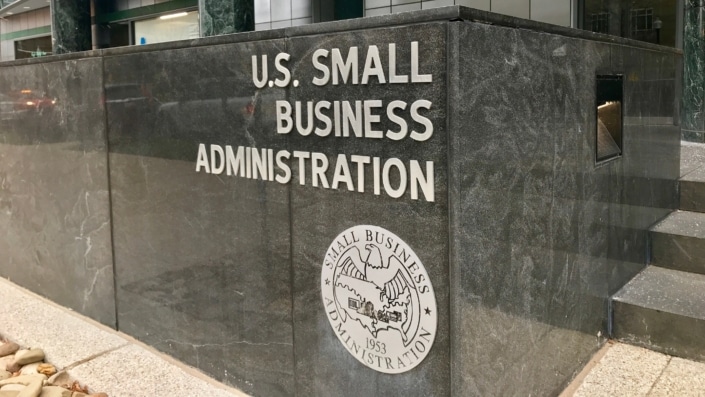One of the most exciting times for any small business is when it has the opportunity to grow – be it from better-than-expected sales; the development of a new product or service; or physical expansion such as getting a bigger space or a second location. Business growth, however, usually requires the hiring of additional staff, which can be expensive.
Fortunately, small business owners have a wide array of financing options that can help them expand their staff and facilitate their growth plans. Depending on your credit score and the strength of your business plan, a small business loan, a business line of credit, or even an SBA loan can help you hire the team that you need to meet your growth expectations.
Types of Financing
If you’re looking to take your small business to the next level and need to hire additional employees, several types of financing options could be right for you depending on your specific situation.
SBA 7(a) loans
SBA 7(a) loans are perhaps the best financing option when it comes to growing your business and hiring new employees because they generally offer the lowest interest rates and are flexible when it comes to the duration of the loan. Take note, though, that the SBA does not directly administer the loans, rather, they guarantee a large portion of loans given by qualified lenders.
Keep in Mind: These loans require an excellent credit score, a strong business plan, and an excellent cash flow history. They can also take weeks to fund once you’ve been approved, so if you are planning to apply for an SBA 7(a) loan, make sure you have the qualifications beforehand and that you’re not in a hurry to receive the funds.
Traditional loans
Traditional loans, or term loans, are similar to SBA 7(a) loans but they aren’t guaranteed by the SBA. They are offered by both traditional banks and alternative lenders, and like the 7(a) loan, they offer a lump sum of cash upfront to be paid back over a predetermined time frame and a pre-agreed upon interest rate.
Keep in Mind: Traditional banks may require a business plan, especially if you’re borrowing for long-term growth, as well as excellent credit, and will charge an interest rate that is generally higher than a SBA 7(a) loan. An alternative lender won’t require a business plan and may grant you a loan with a lesser credit score than a bank, but if approved, will charge a higher cost of capital.
Business line of credit
A business line of credit is, perhaps, the most flexible financing tool for small business owners seeking to hire new employees as part of their growth plan. A line of credit gives you quick access to cash that can be used to hire new employees as your growth plan progresses – and you’re only charged interest on the amount you borrow.
Keep in Mind: A business line of credit may charge a higher interest rate than a bank loan, and payback and renewal terms can be complicated, so really examine the terms of the line of credit before you sign up for one. You may be able to get a higher line of credit and a lower interest rate with a traditional bank if you secure your line of credit with collateral.
Short-term Loans
Short-term loans, also known as working capital loans, are typically loans with a 6-month duration or less. These types of loans can help you quickly hire new employees as you grow. They are almost exclusively offered by alternative lenders, so the requirements for these loans are usually not as strict as for a bank loan.
Keep in Mind: Short-term loans often charge a higher interest rate than your standard bank loan. Additionally, if you believe a short-term loan is best for you, carefully research the lender, as there are some bad actors in the online lending space.
Define Your Needs Beforehand!
If you’re seeking to expand your business by hiring new employees, there are several types of lending products for you to consider. But, before you begin evaluating your different options, it’s important that you carefully define what your needs are. Doing so beforehand can help you determine factors such as the loan amount you are seeking, whether a traditional bank or online lender is best for you, and the type of financing you need.
The factors you need to define before you delve into the lending market are:
- How many new employees do you need to hire and what will they cost? This seems straightforward, but keep in mind that you shouldn’t just consider what you’re going to pay them, you also need to factor in payroll taxes, whether they will be full-time, part-time, or contracted workers, and any benefits you may want to offer them. This should help you determine how much you need to borrow.
- Do you have a strong growth plan? In other words, can you make a strong case that your growth plan will succeed with the addition of new employees? If you plan to apply for a business term loan with a traditional bank or go to an SBA lender for a SBA 7(a) loan, they are going to want to see a convincing business plan that demonstrates how you plan to grow your business and that you’re going to make money to cover the cost of your loan.
- What is your credit score? The strength of your credit will be a determining factor in the cost of capital for your loan. Put simply, the higher your score, the lower the interest rate you’re going to have to pay, no matter what type of financing you’re seeking. Check your credit score with all three credit bureaus (Experian, Transunion, and Equifax), as well as your business score with Dun & Bradstreet. If it’s low, examine ways you can improve it, or determine if you have collateral in case a lender will only offer you a secured loan or line of credit.
- How strong is your cash flow? If you’re seeking to hire temporary seasonal workers, that means your business probably has an uneven cash flow. If you decide to take out financing to pay for seasonal workers, make sure that your cash flow is strong enough during your busy season to justify taking on that debt.
- What type of business do you own? The type of business you operate is important because some types of small businesses are considered riskier than others. Restaurants, transportation companies, and real estate brokerages are generally considered among the riskiest industries, and if your business fits in one of these industries, you may have trouble securing a loan with a reasonable interest rate. If you are in any of these industries, it’s especially important to make sure you have an excellent business plan, a strong cash flow and that you can demonstrate future success with your growth plan.
A great small business starts with great planning. Defining your needs before you look to financing will help you select the best financing option as well as keep your cash flow strong while you grow your team.





